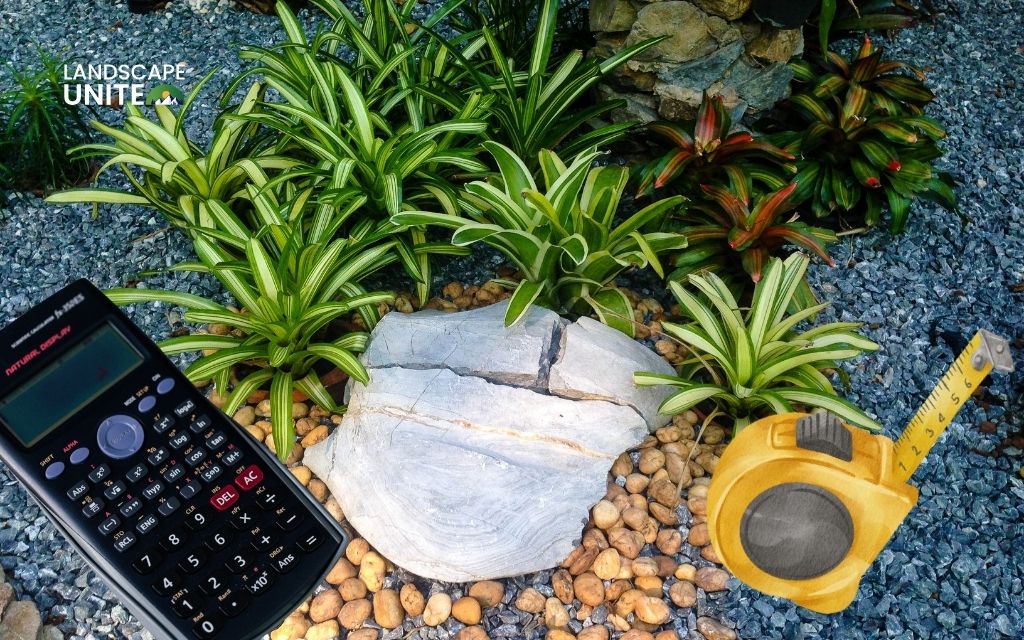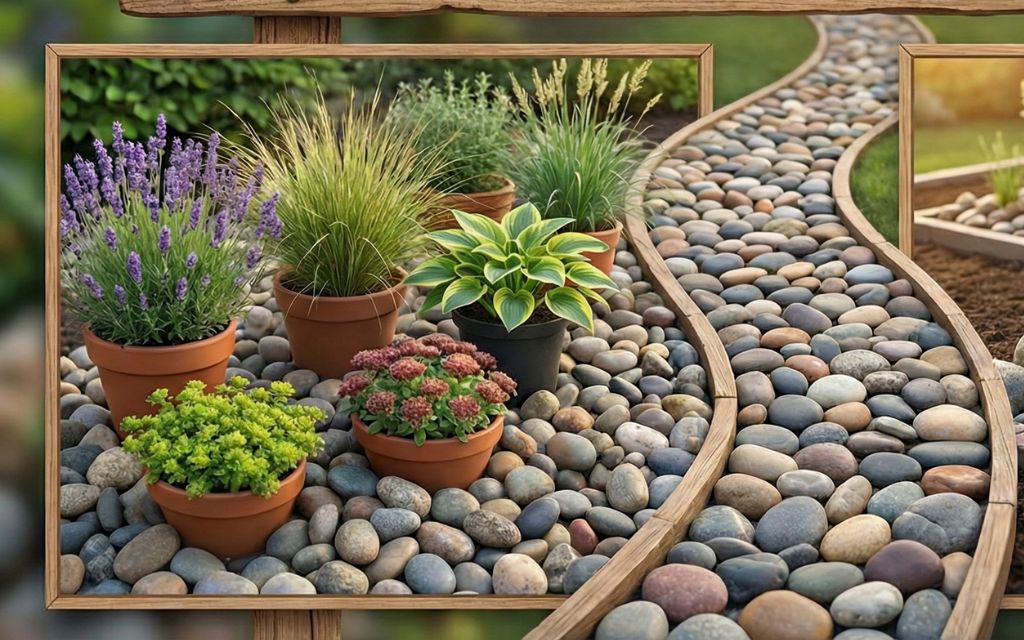Tired of watching your water bill climb every summer while your lawn struggles to stay green? You’re not alone. Millions of homeowners across the U.S. are discovering that xeriscaping offers a smarter, more sustainable approach to beautiful landscaping.
Xeriscaping transforms your yard into a water-efficient paradise using drought-tolerant plants, smart irrigation, and strategic design. This isn’t about creating a desert wasteland. It’s about crafting a stunning landscape that thrives with minimal water while reducing your maintenance headaches.
Ready to learn how to xeriscape your yard with our outdoor design ideas? Let’s dive into the complete process that will save you time, money, and water for years to come.
What is xeriscaping and why should you care?
Xeriscaping combines “xeros” (Greek for dry) with landscaping to create gardens that require minimal supplemental watering. This approach utilizes native and adapted plants, efficient irrigation systems, and thoughtful design to minimize water usage while maximizing visual appeal.
The benefits of xeriscaping extend far beyond water conservation. Xeriscaped yards require less mowing, fertilizing, and pest control than traditional lawns. You’ll spend fewer weekends maintaining your landscape and more time enjoying it.
Climate change and water restrictions make xeriscaping increasingly relevant across diverse U.S. regions. Whether you’re dealing with drought conditions in California or hot summers in Texas, these principles adapt to your local climate and native plant communities.
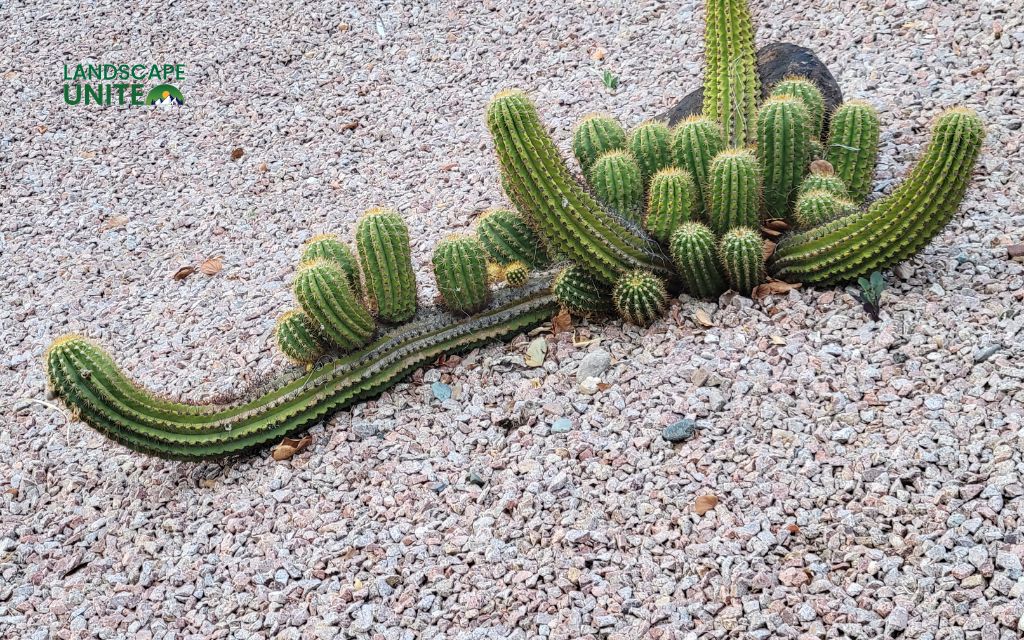
Step-by-step guide: how to xeriscape your yard
Step 1: Create a comprehensive plan for your space
Start by sketching your yard and identifying different zones. Note areas that receive full sun versus shade, slopes that affect drainage, and spaces designated for different activities like entertaining or pet exercise.
Consider your lifestyle needs:
- Do you need open areas for children to play?
- Would you prefer seating areas for outdoor dining?
Map out high-traffic zones that might benefit from hardscaping versus planted areas.
Use graph paper or free online planning tools from university extension services to create a scaled drawing. This planning phase prevents costly mistakes and ensures your xeriscape design meets your family’s needs.
Read more about how to create a comprehensive xeriscape plan for your yard in this blog.
Step 2: Remove existing lawn and unwanted plants
Three effective methods can help you clear your space. Sod cutting provides immediate results but requires physical effort or equipment rental. Solarization uses clear plastic sheeting to heat-kill grass over 6-8 weeks during summer months. Sheet mulching layers cardboard and mulch to smother existing vegetation over several months.
Dispose of removed materials responsibly through municipal composting programs or by creating your own compost pile. Avoid excessive soil disturbance that can damage beneficial microorganisms and soil structure.
The removal process varies by region and grass type. Cool-season grasses in northern climates respond differently than warm-season varieties in southern regions.
You can find out more about transforming your lawn into a xeriscape yard in this guide.
Step 3: Improve soil drainage and health
Most U.S. regions have clay-heavy soils that retain too much moisture for drought-tolerant plants. Test your soil drainage by digging a hole 12 inches deep and filling it with water. If water remains after 24 hours, amendment is necessary.
Add compost to heavy clay soils to improve drainage and provide organic matter. Sandy soils benefit from compost that increases water retention capacity. Focus amendments on planting areas rather than treating the entire yard.
Avoid over-tilling, which can damage soil structure and create hardpan layers that impede drainage. Work amendments into the top 6-8 inches of soil where most root activity occurs.
Step 4: Install efficient irrigation systems
Convert traditional sprinkler systems to drip irrigation for maximum water efficiency. Drip systems deliver water directly to plant root zones, reducing evaporation and eliminating water waste on pathways and hardscaping.
Install smart controllers that adjust watering schedules based on weather conditions and seasonal plant needs. Many water districts offer rebates for smart irrigation technology upgrades.
Create hydrozones by grouping plants with similar water requirements together. This allows you to provide appropriate irrigation to each area without overwatering drought-tolerant plants or underwatering those that need more moisture.
Find out more about how to install drip irrigation for xeriscaping in this guide.
Step 5: Select drought-tolerant plants for your region
Choose plants adapted to your specific climate zone and local growing conditions. Native plants offer the best drought-tolerant plants because they evolved in your area’s natural rainfall patterns.
- Perennial flowers: Penstemon, yarrow, and blanket flower provide colorful blooms throughout the growing season while requiring minimal supplemental watering once established.
- Ornamental grasses: Blue grama and little bluestem add texture and movement while withstanding drought conditions better than traditional turf grass.
- Ground covers: Creeping thyme and ice plant create attractive low-growing carpets that suppress weeds and require minimal maintenance.
- Shrubs: Rabbitbrush and sumac species provide structure and seasonal interest while supporting local wildlife with nectar and shelter.
Consult local native plant societies and extension services for region-specific recommendations that thrive in your area’s unique conditions.
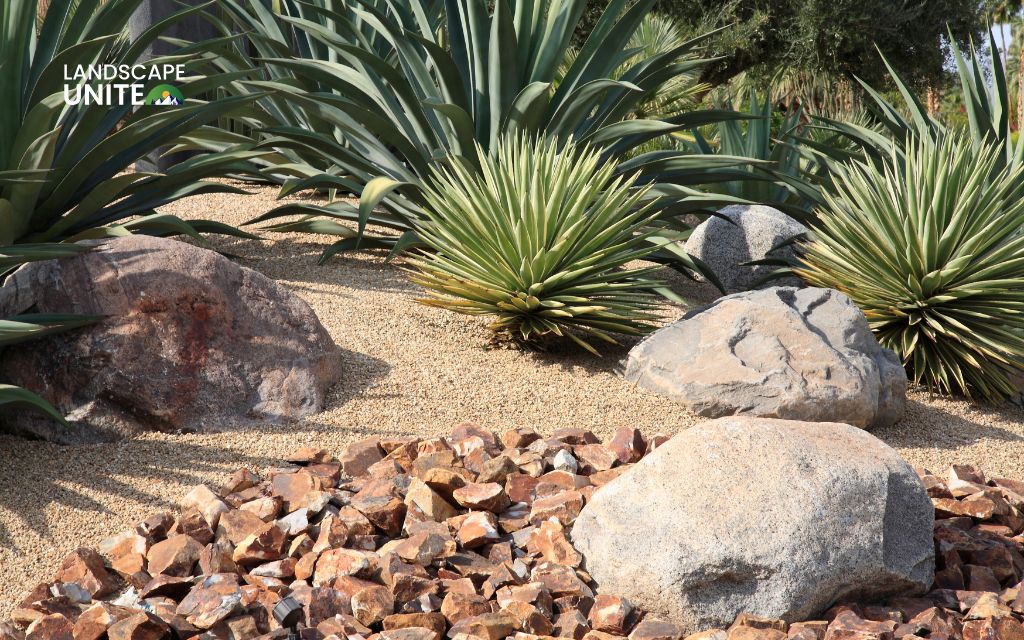
Step 6: Apply mulch and decorative materials strategically
Organic mulches like wood chips and shredded bark work best around planted areas. Apply 2-4 inches thick to suppress weeds, retain soil moisture, and moderate soil temperatures.
When learning how to xeriscape with rocks, use inorganic materials like pea gravel, decomposed granite, or river rock for accent areas and pathways rather than as complete ground cover. Extensive rock coverage reflects heat and creates uncomfortable microclimates for plants.
Frame planted areas with decorative stone borders to create visual definition and prevent mulch from spreading into pathways. This approach combines functionality with aesthetic appeal.
Step 7: Add hardscaping elements for structure
Incorporate permeable hardscaping materials like gravel pathways, flagstone patios, or permeable pavers to create functional spaces while managing stormwater runoff.
Design pathways that flow naturally through your landscape, connecting different garden areas and providing access for maintenance. Consider adding seating areas or fire pits to create outdoor living spaces.
Many municipalities offer rebates for permeable surfaces that reduce stormwater runoff and recharge groundwater supplies. Check with local water departments about available incentive programs.
Step 8: Establish smart maintenance routines
- During the first growing season, water newly planted areas regularly to help plants establish strong root systems. Gradually reduce watering frequency as plants adapt to your local conditions.
- Monitor for weeds, which compete with desirable plants for water and nutrients. Early intervention prevents weed problems from becoming overwhelming later.
- Check drip irrigation systems at the beginning of each growing season. Flush lines, replace clogged emitters, and adjust watering schedules based on seasonal plant needs and local weather patterns.
Regional considerations for successful xeriscaping
Plant selection and timing vary significantly across U.S. climate zones. Cool, wet Pacific Northwest regions require different approaches than hot, arid Southwest deserts or humid Southeast climates.
Spring and fall planting seasons generally provide the best establishment conditions across most regions. Avoid summer planting when heat stress makes establishment more challenging for new plants.
Consider local microclimates created by buildings, slopes, and existing vegetation. South-facing slopes receive more intense sunlight than north-facing areas, affecting plant selection and irrigation needs.
Wind exposure can increase water loss through transpiration. Use taller plants or structures to create windbreaks that protect more delicate species in exposed locations.
Maintaining your water-wise landscape
Xeriscaped gardens require less maintenance than traditional lawns but aren’t maintenance-free. Understanding seasonal care requirements helps ensure long-term success.
- Spring tasks: Inspect and flush irrigation systems, prune perennial plants, and refresh mulch layers that may have decomposed over winter.
- Summer care: Provide deep, infrequent watering during extended dry periods. Spot-treat weeds before they become established competitors.
- Fall preparation: Cut back dormant perennials, trim ornamental grasses, and prepare plants for winter dormancy according to your regional climate.
- Winter monitoring: Check for wind damage to plants and ensure mulch coverage remains adequate for root protection during cold periods.
Reapply organic mulch every 1-2 years to maintain adequate thickness for weed suppression and moisture retention. Decomposed mulch improves soil organic matter content over time.
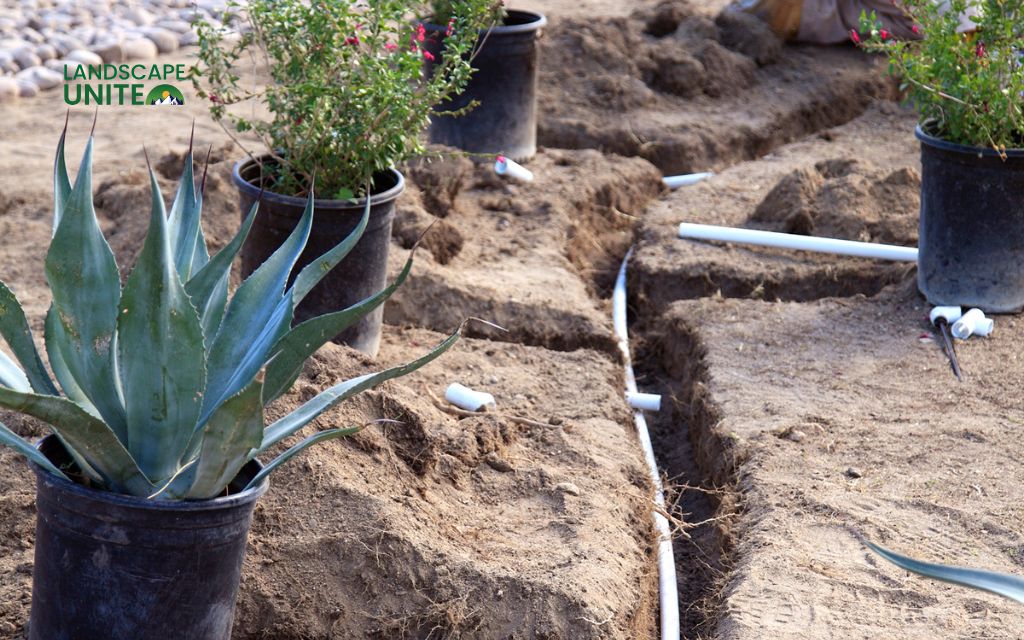
Finding local xeriscaping resources
University extension services provide soil testing, plant recommendations, and design guidance specific to your state and region. Many offer free or low-cost educational workshops on water-wise gardening techniques.
Native plant societies connect you with local expertise and plant sources. Members often organize plant sales featuring species perfectly adapted to your area’s growing conditions.
Specialized nurseries focusing on native and drought-tolerant plants offer better selection and expertise than general garden centers. Staff can provide specific guidance on plant care and establishment in your local conditions.
Water districts frequently offer rebate programs for lawn removal, efficient irrigation upgrades, and drought-tolerant landscaping projects. Contact your local utility to learn about available incentives and requirements.
Transform your landscape one section at a time
You don’t need to tackle your entire property at once. Start with a highly visible front yard section or a manageable side yard area to gain experience and confidence with xeriscaping techniques.
Focus on high-impact areas where water savings will be most noticeable, such as large lawn areas that require frequent irrigation during summer months. Success in these areas builds momentum for larger projects.
Consider seasonal timing when planning your project phases. Complete soil preparation and hardscaping during moderate weather, then plant during optimal establishment seasons for your region.
Budget considerations may also influence your phasing approach. Spreading costs over multiple seasons makes larger projects more manageable while allowing you to learn from early phases before expanding.
Conclusion
Xeriscaping offers a practical solution to rising water costs, environmental concerns, and maintenance fatigue. This Landscape Resources‘ approach creates beautiful, sustainable landscapes that enhance your property value while reducing your environmental impact.
Start planning your transformation today. Choose one area of your yard and begin implementing these water-wise principles. Your future self will thank you for the time, money, and water you’ll save.
At Landscape Unite, we’re committed to providing the best information about landscaping, hardscaping, gardening, and tools for everyone. Our expertise comes from Mile High Lifescape’s years of experience helping homeowners create beautiful, sustainable outdoor spaces.
Ready to dive deeper into water-wise landscaping? Subscribe to the Landscape Unite blog for more expert tips and discover new posts that will help you create the outdoor space of your dreams. For professional guidance on your specific project, visit Mile High Lifescape to connect with experienced landscape professionals who can bring your vision to life.
Related posts:
The 7 principles of xeriscaping explained in detail
Zeroscape and xeriscape: Key differences explained
30 Beautiful xeriscape ideas to transform your yard
Frequently asked questions (FAQs)
How do you prepare ground for xeriscape?
Remove existing vegetation, improve soil drainage with compost amendments, and install efficient drip irrigation systems. Focus on creating optimal growing conditions for drought-tolerant plants rather than fighting your site’s natural characteristics.
Do I need a permit to xeriscape?
Most xeriscaping projects don’t require permits unless you’re making significant drainage modifications or substantial hardscaping installations. Check with local building departments about specific requirements in your area.
What is the downside of xeriscape?
Initial installation costs and the learning curve for plant selection represent the main challenges. However, long-term water savings and reduced maintenance typically offset these initial investments within a few years.
How to xeriscape cheaply?
Start small with native plants from local sources, use DIY installation methods, and focus on cost-effective materials like mulch rather than expensive hardscaping. Many plants can be grown from seed or obtained through plant swaps with other gardeners.
Is xeriscape low maintenance?
Yes, established xeriscapes require significantly less maintenance than traditional lawns. However, expect regular care during the establishment period and ongoing seasonal maintenance like any landscape.
